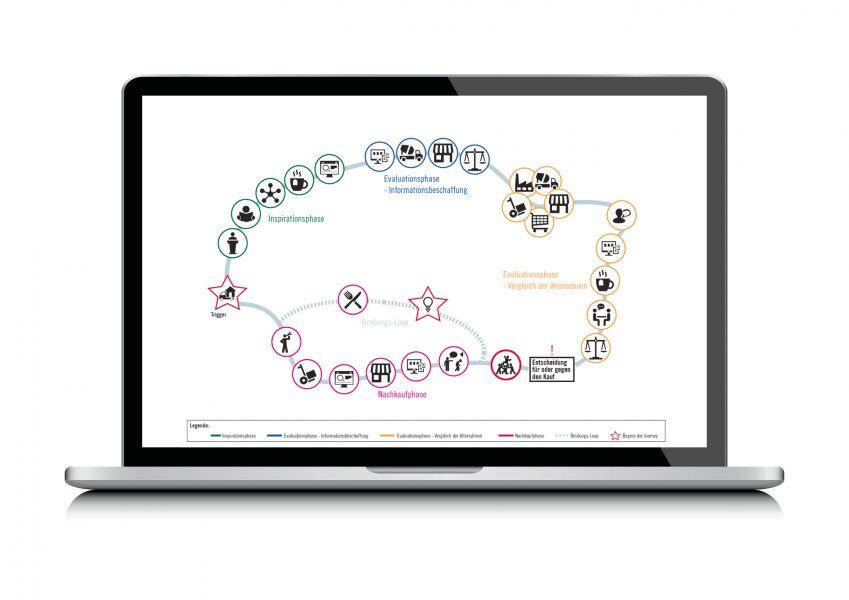Customer journey mapping for HORNBACH: Get in touch at all touchpoints
- Consumer & user research
Client

Industry
Retail
Key parameters of the project:
- Approach: listen, understand, develop an action plan
- Method: 28 interviews, 3 locations, 3 sub-target groups
- Outcome: detailed customer journey map including needs and touchpoints
Hornbach, a German retail hardware chain serving the DIY market, had already defined several target groups, and developed specific offerings for them. Yet it could not ensure that it was addressing each group with maximum effectiveness.
The company wanted to see if there was unutilized sales potential. In this specific case, it determined that it had not handled restaurant owners as a distinct target group up to this point. It set out to challenge its existing stance and explore whether a better understanding of – and communication to – the hospitality industry might open up new sales potential.
The DIY retailer tasked FELD M with helping create an optimized customer journey for the target group in question. In this Case Study Customer Journey at Hornbach, you will learn how a complete customer journey map provides the information to better meet customers’ needs.
Understanding a complex niche target group
The challenge was getting firsthand insights from a target group that is in love with its business, very busy, and hard to contact. But we had to understand the needs, fears and emotions of restaurant owners. And we needed a clear view of the target group’s buying processes as well as its relationship with specialists and wholesalers (levels of trust etc.). Only then would we be able to optimize the customer journey with measures that speak directly to the wishes of the target group (potentials).
To begin mapping the customer journey, we examined the relevant touchpoints and set up a series of interviews to answer the following questions:
-
Why does our target group not realize that we can meet their needs and how can we change this?
-
What are our target group’s needs?
-
What is the ongoing daily demand?
-
What does the purchasing process look like?
-
Which psychological and emotional factors influence the specific phases of the customer journey?

The result: A customer journey map including personas
The outcome was a full customer journey map with needs and fears at each touchpoint. This was based on a detailed analysis of the target group to defining a loyalty loop. This process generated a deeper understanding of the target group, its needs, fears and wishes, as well as the touchpoints currently used.
As these touchpoints varied between interviewees, we created four main personas based on insights we gathered in the 28 interviews. We identified touchpoints already covered by the customer and where the most potential to connect with the target group is available. Together with the client, we also developed a first draft of possible measures to increase the client’s presence at certain touchpoints.
Have a similar project?
Let's find out together how we can help!
-
Consumer & user research
Automotive
User experience: not just the look, but how it works
-
Consumer & user research

Clear positioning in the new and growing online-only car market
-
Consumer & user research
Direct sales
Data-driven design for online/offline communities
-
Consumer & user research
Insurance
Behind the scenes: User research for an online insurance claims reporting system
-
Consumer & user research
E-commerce
Quantitative study for a successful product launch


